Peter Summersby's Blog
February 21, 2020
The Nine styles of Tense and Person
Hello wonderful people.
The English language has three different persons, and three different tenses to write and speak in.
When it comes to writing, there are some styles that are more commonly used than others. This has impacted the way that writing has developed, and what we as readers expect from the books that we read.
First, let us look at the tenses and persons. Each tense and each person can be applied to each other. We have in essence nine different types or styles of writing.
The three persons are:
The first person, e.g. I am Saul.
The second person, e.g. You are Saul.
The third person, e.g. He is Saul.
The tenses are:
The future tense, e.g. It will.
The present tense, e.g. It is.
The past tense, e.g. It was.
Alone, they don’t mean much until you understand that they can be combined.
The first person can be applied to all tenses.
The first person future tense, e.g. I am going to the moon.
This style is used when we are talking or telling someone about what we plan to do. We use this type of speech when we are making plans.
The first person present tense, e.g. I am on the moon.
This style is used when we are telling someone about what we are doing now. We most often this style when talking about what is happening now, or helping people find us.
The first person past tense, e.g. I was on the moon.
This style is used when recounting events that happen to us. For that reason, we find that this style is used very often in fiction or some non-fiction especially memoirs.
The second person can also be applied to all tenses.
The second person future tense, e.g. You are going to eat your breakfast.
This style is used most commonly in giving instructions to someone, to a subordinate or a child.
The second person present tense, e.g. You are in the corner.
This style of communication is best used for describing the actions or the position of another.
The second person past tense, e.g. You went to the shops. This type of writing is most commonly used when recounting someone else’s adventure. If you want to write in the second person then this is the style of writing that is generally accepted.
The third person can also be applied to all tenses.
The third person future tense, e.g. Saul will open the door.
This style of writing is very cumbersome to use. It is most commonly used by teachers when issuing tasks to specific people or anyone in authority for that matter.
The third person present tense, e.g. Greg is jumping on the trampoline.
This is very infrequently used by most writers. It is used frequently in speech when reporting on something someone is doing most notably newscasters during a live broadcast or sports commentators.
The third person past tense, e.g. Zach jumped over the fence.
This the most preferred type of style of writing used, because it allows the person telling the story (the narrator) to tell any story that could be imagined.
The application of this is useful, especially when dealing with creatively written pieces. Most of our writing is written in the third person past tense style and as writers, we can change the tense in given circumstances.
Let me elaborate, in most books the style is the third person past tense. As a writer, we can use other tense styles in speech. Many of the examples I gave are speech-related, and writers do use them in speech with the intention of creating more realistic and believable dialogue and interactions between our characters.
Knowing that there are these types of style choices available will hopefully get you thinking about how you can experiment in your writing.
Keep writing,
Peter.

January 4, 2020
How to improve your writing skill?
Hi guys,
Happy New Year to each one of you! Before I start, I want to thank each one of you for supporting me through my entire journey as an Author and Blogger. I hope you all had a great start to 2020 and I look forward to sharing more of my experiences with you on this blog.
 How to improve writing skills is a question that has been asked of me a lot and there are two types of answers that I have heard and given.
How to improve writing skills is a question that has been asked of me a lot and there are two types of answers that I have heard and given.
The easy answer to this question is: to keep writing. I know it sounds absurd but the old saying, “practice makes perfect”, is sound. Here is why: when you write you are practicing expressing yourself, even if you are the only person that reads these, “vomit dumps”. When you read what you wrote again you start to see the mistakes you make. The process from conscious to unconscious takes time and the more you practice it the faster that it comes.
I know that it seems abstract and maybe a little vague, but let’s move on.
The second longer answer to the question of how to improve writing, falls into two parts 1) read and write 2) get a critique partner.
Step one is the same as the first answer – read the style of reading you want to master. If you want to become a novelist, like I suspect you do, then you need to read the genre of books that you want to write. The second part of step on is to write that genre and then compare the result to other people’s work in that field.
Step two is the difference, this comes in the form of a critique partner that can offer you feedback on your writing to help you improve. I am always looking for people to critique partner with me. It takes a lot of work, but it can be a very rewarding journey. I must thank Brandon Sanderson for the idea.
The reason I make this distinction is that there are different types of writing for different purposes. For example; I will use a different writing style for a letter or an email to my mother that I would if I was writing a book.
 The above approaches follow the old method of attaining the needed ten thousand hours to become a master in the field. This is not the only way to do this. What you need to do is create a feedback loop in your learning. What this means is that you write, have someone critique it for you and then you go and rewrite it again. This intentional practice provides you with the most powerful impact to improve your writing. When it comes to writing it may still take quite a long time to achieve what you set out to accomplish but the goal is not quite so unattainable as it once seemed.
The above approaches follow the old method of attaining the needed ten thousand hours to become a master in the field. This is not the only way to do this. What you need to do is create a feedback loop in your learning. What this means is that you write, have someone critique it for you and then you go and rewrite it again. This intentional practice provides you with the most powerful impact to improve your writing. When it comes to writing it may still take quite a long time to achieve what you set out to accomplish but the goal is not quite so unattainable as it once seemed.
In summary to improve your writing follow these steps:
1) Read – The type of reading you want to produce.
2) Write – Have a go and give it your best shot.
3) Have someone critique your writing. – Find someone that is either at the same level as you or slightly better so that you can work together.
4) Intentionally practice what you lack – Rewrite your own work, with the advice from your critique partner in mind.
5) Reread your own work. – So that you can see how much progress you have made.
6) Repeat until successful.
If you want to know more check out ten-thousand hours.
Let me know if this helps you out!
Keep writing,
Peter
June 8, 2019
Editor’s notations.
Hi Guys,
I know it’s been a while. I have been working on a really big project which I will share with you in due course. With such big projects, there comes a great number of challenges. One of the things I learned during this and my past projects, I felt, warranted a special blog.
The last post I wrote was about finishing off or the resolution of your writing. Then what happens next? I have talked about the three stages of writing and the stage after writing is that of the dreaded editing stage. The editing stage is also when you start the marketing stage as far as I am concerned. It’s the part when you start telling people about your book and generating some interest about it.
So you hire an editor and trust me you should always do this.
Here’s why:
1) You are too close to see the mistakes that you made.
2) A fresh set of eyes will help you spot any grammar, spelling and punctuation mistakes.
3) You might think that your story is perfect the way that it is but trust me “It can always do with improvement.”
Now, please take my meaning the right way. I am not saying that your writing is bad; just that you can improve it. Every single serious writer knows they can always improve and anyone that takes their writing beyond the writing stage has to have someone look at it.
So, after receiving the manuscript back from an editor you will see this.

That is a small segment from my upcoming novel “The Hunt for Veritas.” What is happening in the scene is not important, but look at the red marks. A word is struck through like the word ‘commented’. The editor is saying to remove it. He would then offer a replacement for the word, also in red, which would be underlined.
If you have a hard copy and you see something that is both struck through and then underlined this means that the editor changed his mind and you should keep the original. As we have the ability to edit what we do in the document on our computers you won’t see that happen.
This also happens with punctuation marks so it can get a little difficult to know what is going on as a strike through would not look the same. The line remains in the same place as it would be if there was text. So do be careful.
I hope this helps the struggling authors when they get their precious manuscript back from the editor and find it filled to the brim with red lines and marks. This just means that the editor worked really hard to find all your mistakes.
Keep Reading.
Peter
November 23, 2018
Hello world!
Welcome to WordPress. This is your first post. Edit or delete it, then start writing!
July 27, 2018
Resolution
Hi guys,
We have all heard it in the classroom, “Your story needs a resolution”. To this piece of advice I say “No it doesn’t”.
Why does our fiction need to have any resolution at all? They tell us because it leave a sense of satisfaction in the reader, it is good for telling a story. All this advice is okay if you want to write a stand alone book. Also life doesn’t give us satisfying conclusions to our lives why should our stories. Is it in the hope that we will seek out to be a piece with all people. No many people die and move on without saying farewell or being prepared for the great change that happened to me. I moved to China very quickly the decision to move to China was very quick and it came as a shock to many people. I am sure that parts of my family are still in shock.
The point is that there is no resolution to many problems or situations that we find ourselves these days. We all know that life imitates art and art imitates art so why hasn’t our writing caught up with this paradigm? Why do we as writers keep seeking an ending to our books when there is no resolutions to be had?
I have read many books some of them have been featured on this blog. One thing that I have seen coming about more and more in writing, is the unsatisfying ending. I call out those new writers, myself included in rushing to find a conclusion to a story so that it fits within a word limit, or some other arbitrary length that the publishing community has fostered on us as writers. The word limit specifications was set in the days when cost of printing a book was huge and mostly shouldered by the publisher. Now with the advent of self publishing or assisted self publishing why are getting stories that are still unfinished?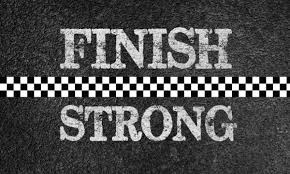
I say to you all, if you have hit 100,000 words and your story isn’t finished you can either do one of two things break your story into a smaller serial or keep writing. Please stop this hitting a certain word limit and wrapping up the story. I am sad to say it sours the story for me and if you want to write more and have more sales, then please end it well. It doesn’t have to be a happy ending, I am very happy to read a story where the main character becomes the bad guy that he fought in the beginning. Just make sure your story is well finished. The way your end a book should have as much thought put into it as the beginning of the book.
Keep writing and keep reading,
Peter
July 20, 2018
Choice and tension.
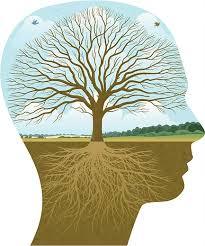 Hi guys,
Hi guys,
Choice is what we all want to have. We want to keep our options open, to make sure that we get the best out of any possible situations. The problem with the idea, is that when we “keep our options open” we actually cut ourselves off from bigger gains or from the peace of mind that only come from doing the right thing.
How does this deal impact my writing? In two ways.
Your character in your story will also make choices for your story to continue, they will make choices that will either benefit them or hurt them. If you can write this into sort of dilemma in your story you create great tension. Tension is what keeps the pages turning and people coming back to your work.
Your own self improvement, by deselecting some choices that are set before you your choice not only becomes easier to deal with, it also leads you to better situations. These situations will not also be easier but you will know that you are there because you chose them not because you kept your options open and took the best that you had.
The other side of the coin is that when options are kept open no choice is actually made.
e.g. This happens in relationships quite a lot. A person keeps options open when the person that is right for them comes along they miss it because they were too busy perusing the menu rather than keeping a good look out. So they end up with something less, because they are comfortable with that.
This example can be very useful in your story because it will create a tension, a tension between what they are doing and what the characters wants. Many characters will find themselves with the right person ‘because story’ but that doesn’t happen often in the real world. People will often have the choice made for them by lots of smaller actions. Its a choice to be with this person rather than becoming the person that will attract the right person to you.
Choice gives rise to change and this leads to the greatest tension that we can use in our writing the conflict between what a person is comfortable with and what a person want to become.
So in summary we have some great personal choices that we can look into when writing our characters to prevent them becoming static throughout the whole book.
Comfort and progress.

Options open and what is best.
Missed opportunities
For a writer we need to know when what we are writing is taking place in our own lives. Many times I have looked at doing what is the right thing and chosen to put it off and that has bitten me, and I have chosen to not to something that will benefit my writing and found that I am now further behind again.
Success does not come by wishing but by hard work and deselecting some choices.
Keep reading and keep writing.
Peter
July 17, 2018
Book Review: The Planet Urth – Jennifer and Christopher Martuuci
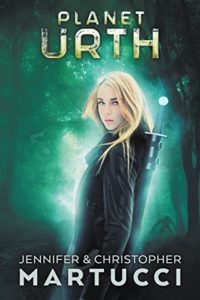 The Planet Urth by Jennifer and Christopher Martuuci was an intriguing concept. The story recounts that there had been a major biological shift and a new species had arisen to take over earth. Following two sisters on their daily struggles to find food and survive in the hostile world, was quite a treat. Jennifer and Christopher write well and immerses you in the world that they created. They vividly describe the new monsters that the sisters have to fight to survive.
The Planet Urth by Jennifer and Christopher Martuuci was an intriguing concept. The story recounts that there had been a major biological shift and a new species had arisen to take over earth. Following two sisters on their daily struggles to find food and survive in the hostile world, was quite a treat. Jennifer and Christopher write well and immerses you in the world that they created. They vividly describe the new monsters that the sisters have to fight to survive.
The story is the first in a series and the girls greatest challenge arrives towards the end when they meet a new family for the first time in what seems to be a very long time. The eldest of the sisters face the this challenge herself for a few days, struggling to find a the courage in herself to go an tell the new family that she is there.
The characters lack any real plan, when they do something they generally deal with their situations in the instance, they handle the situation with great courage and growing confidence, but what they lack is any form of desire to change their lot in life. This could have been written into the story intentionally, and it is well written. What can two girls do against mutated wolves that are six feet tall, or any of the other monsters that are in the world. She has painted such a stark reality that even the reader is swept along in the hopelessness of the whole situation.
Jennifer and Christopher Martuuci is an excellent writer and has a very well crafted story will be reading the next instalment to see how the sisters progress
5/5
The Planet Urth – Jennifer and Christopher Martuuci
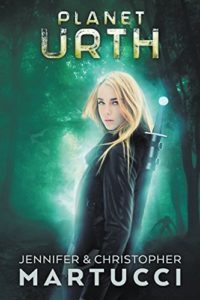 The Planet Urth by Jennifer and Christopher Martuuci was an intriguing concept. The story recounts that there had been a major biological shift and a new species had arisen to take over earth. Following two sisters on their daily struggles to find food and survive in the hostile world, was quite a treat. Jennifer and Christopher write well and immerses you in the world that they created. They vividly describe the new monsters that the sisters have to fight to survive.
The Planet Urth by Jennifer and Christopher Martuuci was an intriguing concept. The story recounts that there had been a major biological shift and a new species had arisen to take over earth. Following two sisters on their daily struggles to find food and survive in the hostile world, was quite a treat. Jennifer and Christopher write well and immerses you in the world that they created. They vividly describe the new monsters that the sisters have to fight to survive.
The story is the first in a series and the girls greatest challenge arrives towards the end when they meet a new family for the first time in what seems to be a very long time. The eldest of the sisters face the this challenge herself for a few days, struggling to find a the courage in herself to go an tell the new family that she is there.
The characters lack any real plan, when they do something they generally deal with their situations in the instance, they handle the situation with great courage and growing confidence, but what they lack is any form of desire to change their lot in life. This could have been written into the story intentionally, and it is well written. What can two girls do against mutated wolves that are six feet tall, or any of the other monsters that are in the world. She has painted such a stark reality that even the reader is swept along in the hopelessness of the whole situation.
Jennifer and Christopher Martuuci is an excellent writer and has a very well crafted story will be reading the next instalment to see how the sisters progress
5/5
July 13, 2018
The Red Herring.
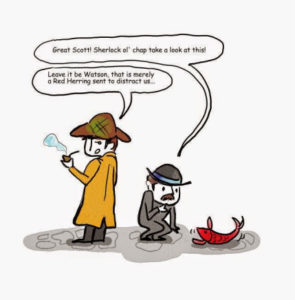 I spoke about foreshadowing earlier, see the link here, I even discussed the use of dreams as a literary device here. Today, I would like to cover the opposite to these devices more commonly referred to as the red herring. The red herring is quite simply a device where the writer intentionally puts a clue to something that is happening that is not quite true.
I spoke about foreshadowing earlier, see the link here, I even discussed the use of dreams as a literary device here. Today, I would like to cover the opposite to these devices more commonly referred to as the red herring. The red herring is quite simply a device where the writer intentionally puts a clue to something that is happening that is not quite true.
This is very common in mystery or horror genres, but it has cropped up from time to time in others.
The effect is best seen as a clue that gives the reader the wrong impression about something that happened. In the mystery genre it is best seen as a clue that leads the reader and the character up the garden path. Like wolf prints near a murder scene, it leads the character to think that the wolf killed the hapless victim only to find the den of the wolves no more that three metres away from the scene, and had no part in the murder.
There are authors that use it intentionally, Agatha Christie’s Ten Little Indians is a good example of a red herring, the fourth last person to die, was discovered to be missing and it was assumed by the characters and the reader to be the murderer, only for the body to be found washed up on the shore later.
The use of a red herring can be for several reasons, in the murder genre it can show the investigator working through the clues and chasing down every clue before coming to the right answer. The other example could simply be a hat off to the reader. Like in Dan Browns Da Vinci code when the person thought to be behind the whole conspiracy turns out not to be, but the characters name is in fact Latin for Red herring. Here the writer wrote a red herring into the book not to demonstrate investigative skill but more as a tip off to the readers to see if they were watching and paying attention.
However, there is a case in JK Rowling’s books where in the first couple of books it is implied that Snape and Malfoy are working together when they aren’t, but she flips it on its head when they actually start working together. This was certainly a nod to the readers of the previous books in 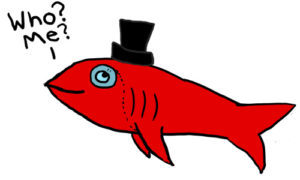 acknowledging the red herring and proving them right.
acknowledging the red herring and proving them right.
Unlike foreshadowing where the writer clues the reader into things that will happen, the red herring is more a nod to the readers, to keep them on their toes.
Should we as writers use red herrings? I think we should, we do need to be careful in crafting anything in our books but we shouldn’t shy away from the use of this trope simply because we are either new writers or because it has been done so many times. Tropes are like tools in a carpenter’s belt, “you expect him to use the tools in a way that helps him build what he needs, not to discard them saying, I don’t use them because every other carpenter uses them”.
Keep reading and Keep writing.
Peter.
July 10, 2018
Book Review: A Robot Named Clunk – Simon Haynes
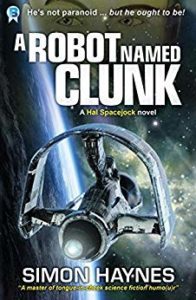 A Robot Named Clunk was a nice little discovery by Simon Haynes. It is the first in a series called Hal Space Jock. The robot that the book is named after join Hal in a simple mission, what follows is a series of mishaps that is compounded by Hal. The effect of the story is one of a series of problems that build upon each other and finally come a stunning conclusion.
A Robot Named Clunk was a nice little discovery by Simon Haynes. It is the first in a series called Hal Space Jock. The robot that the book is named after join Hal in a simple mission, what follows is a series of mishaps that is compounded by Hal. The effect of the story is one of a series of problems that build upon each other and finally come a stunning conclusion.
Some of the accidents seemed a little contrived as they happen just when Hal or Clunk seem to be achieving what they wanted. The feel is of a man and a robot assigned to him by a mega corporation are the but of a collection of jokes set up by fate. They sometimes avoid death and dismemberment by a lucky accident or just plain stupidity.
I kept reading right to the end, Simon Haynes does have a way with keeping you on the edge of your seat. If you like a fun time and watching the slapstick antics of a robot and an incompetent pilot, this book will be for you.
I was quite impressed with Simons Haynes ability to keep the story going and still manage to find plausible reasons for the characters to do something either really clever to get out of a situation or really stupid to create an even later on that solved on of their problems.
4/5



